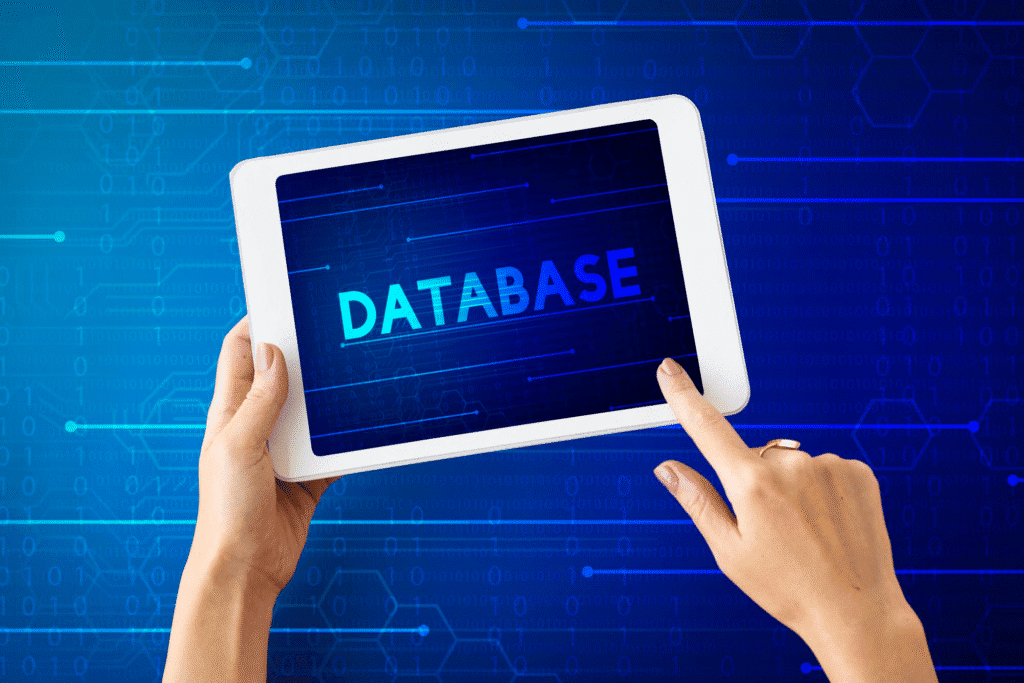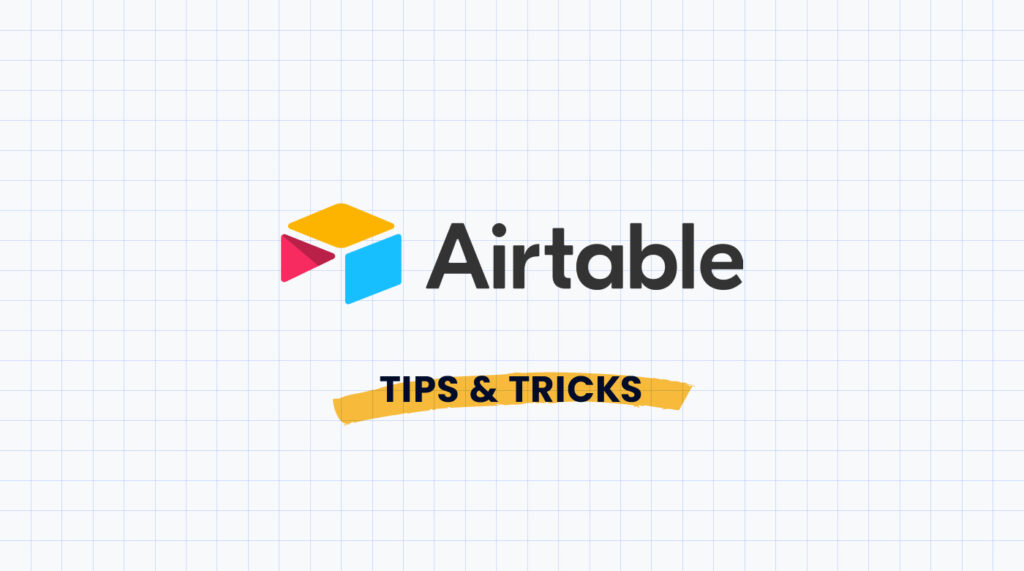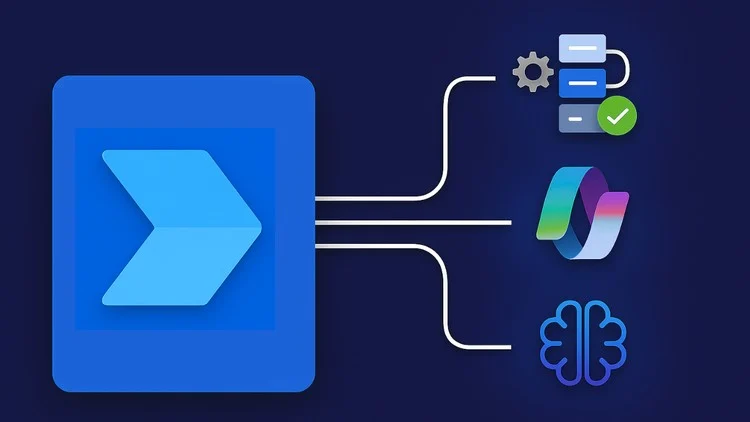
Understanding the power of Turning Spreadsheets into AI Apps
Why transform your spreadsheet data?
Static spreadsheets, while useful for storing data, severely limit its potential. Transforming your spreadsheet data into an AI application unlocks a wealth of possibilities far beyond simple sorting and filtering. In our experience, this transition allows for dynamic insights, automated processes, and predictive capabilities that simply aren’t possible with static data. Consider a marketing team using a spreadsheet to track campaign performance: an AI app could automate report generation, predict future campaign success based on historical data, and even optimize ad spending in real-time.
A common mistake we see is underestimating the transformative power of machine learning on spreadsheet data. For example, a manufacturing company might use spreadsheets to track equipment maintenance. Converting this data into an AI app could predict potential equipment failures, enabling proactive maintenance scheduling and minimizing costly downtime – a significant improvement over reactive, spreadsheet-based tracking. By leveraging AI, you move from simply recording data to *actively using* it to improve decision-making and streamline operations, dramatically increasing efficiency and profitability. This transition is not merely a technological upgrade; it’s a fundamental shift in how you interact with and derive value from your data.
Benefits of using AI for app development
Leveraging AI in app development built from spreadsheets offers significant advantages over traditional methods. In our experience, AI dramatically accelerates the development lifecycle. Tasks like data cleaning, feature engineering, and model training, which can consume weeks or even months using manual processes, are significantly streamlined. This allows for faster iteration and quicker deployment of Minimum Viable Products (MVPs), enabling you to test your app‘s core functionality and gather user feedback rapidly.
Furthermore, AI enhances the app’s capabilities. For instance, incorporating machine learning algorithms can enable predictive analytics, providing valuable insights into user behavior and preferences. A client recently used AI to predict customer churn, allowing them to proactively address issues and improve retention rates by 15%. This predictive power, combined with AI-driven automation, can significantly reduce operational costs and improve overall app efficiency. Remember, while AI offers substantial benefits, proper data preparation and model selection are crucial for success. A common mistake we see is neglecting data quality – clean data is the foundation of any successful AI application.
Exploring various AI-powered app builders
Several platforms empower you to transform your spreadsheet data into functional AI applications without extensive coding. In our experience, the best choice depends heavily on your technical skills and the complexity of your desired application. Low-code/no-code options like Google’s AppSheet excel for rapid prototyping and simpler AI integrations, leveraging pre-built connectors and templates. For instance, you could quickly build an app predicting customer churn based on spreadsheet data with minimal coding. However, for more sophisticated models or custom AI integrations, you might consider platforms that allow for more granular control.
Alternatively, platforms like Microsoft Power Apps, while also low-code, offer a more robust environment suitable for more complex AI workflows. A common mistake we see is underestimating the data preparation needed; regardless of the platform you choose, meticulously cleaning and structuring your spreadsheet is crucial for successful AI integration. More advanced users might opt for platforms enabling direct integration with popular machine learning libraries like TensorFlow or PyTorch, offering maximum flexibility but requiring significant programming expertise. Remember to consider factors like scalability, cost, and the level of support offered by each platform when making your selection.
Choosing the Right AI App builder for Your Needs

Top AI app builder platforms compared
Several platforms cater to building AI apps from spreadsheets, each with strengths and weaknesses. In our experience, choosing the right one depends heavily on your technical skills and the complexity of your AI needs. For instance, Google Cloud AI Platform offers robust tools and scalability, ideal for large datasets and complex models, but requires significant coding expertise. Conversely, Microsoft Azure Machine Learning provides a more user-friendly interface with pre-built components, making it accessible to users with less coding experience. However, its scalability might be a limiting factor for very large projects.
A common mistake we see is underestimating the importance of data preprocessing. Platforms like Amazon SageMaker excel in providing tools for this crucial step, offering built-in data cleaning and transformation functionalities. However, its pricing model can be complex, requiring careful planning. Consider your budget alongside ease of use and scalability when making your decision. For simpler applications, a no-code/low-code platform like Lobe might suffice, offering a visual interface and rapid prototyping capabilities, though it might lack the advanced features of cloud-based solutions. Ultimately, the best AI app builder is the one that best aligns with your specific project requirements and technical capabilities.
No-code vs. low-code vs. traditional development
The choice between no-code, low-code, and traditional development platforms significantly impacts your AI app’s creation and maintenance. No-code platforms, like some drag-and-drop AI builders, offer the quickest path to a basic application. They’re ideal for users with minimal coding experience and simple data analysis needs. However, their limitations become apparent with complex projects requiring customized features or integrations. In our experience, scaling a no-code application can be costly and time-consuming if your needs evolve beyond the platform’s built-in capabilities.
Low-code platforms bridge the gap, offering a visual development environment with the option to incorporate custom code when necessary. This flexibility is crucial for handling more sophisticated data manipulations and AI model integrations. For instance, a low-code platform might allow you to easily connect your spreadsheet data to a pre-trained machine learning model, while also permitting custom code for specialized data preprocessing. Traditional development, while demanding extensive coding expertise and a longer development cycle, provides unparalleled control and customization. It’s the optimal choice for highly complex AI applications requiring unique algorithms or integrations with existing systems. Choosing the right approach depends heavily on your technical skills, project complexity, and budget constraints. A common mistake we see is selecting a platform that’s too simplistic or too powerful for the task at hand.
Factors to consider when selecting an AI app builder: scalability, cost, features
Selecting the right AI app builder hinges on three critical factors: scalability, cost, and features. Regarding scalability, consider your projected data growth. Will your application handle a tenfold increase in users or data volume? In our experience, choosing a platform with flexible infrastructure, such as cloud-based solutions offering autoscaling, is crucial for long-term success. A common mistake we see is underestimating future needs, leading to costly migrations and downtime later. For example, a simple spreadsheet application might only need minimal resources initially, but if it expands to incorporate machine learning models for predictive analysis, you’ll require significantly more processing power.
Cost analysis should go beyond the initial subscription fee. Factor in potential costs associated with data storage, API calls, and additional features or integrations. Some platforms charge per user, while others offer tiered pricing based on usage. A feature comparison is equally vital. Prioritize features directly impacting your application’s functionality and user experience. For instance, if real-time data processing is essential, ensure the platform supports it. Does it provide pre-built models relevant to your industry? Does it offer robust security features to protect sensitive data? Carefully weigh these features against your budget and scalability requirements to find the optimal balance.
Step-by-step guide: building your AI App from a Spreadsheet
Data preparation and cleaning for optimal results
Before feeding your spreadsheet data into an AI model, rigorous cleaning and preparation are crucial. In our experience, neglecting this step significantly impacts model accuracy and performance. A common mistake we see is failing to address missing values. Instead of simply omitting rows with missing data, consider imputation techniques—replacing missing values with calculated estimates (e.g., mean, median, or more sophisticated methods like k-Nearest Neighbors). For categorical variables with inconsistent spellings (e.g., “blue,” “Blue,” “BLUE”), standardize them using techniques like lowercase conversion or creating a mapping dictionary.
Data transformation is equally vital. For instance, if your model requires numerical inputs, ensure all relevant columns are properly formatted. Scaling numerical features (e.g., using standardization or normalization) often improves model training speed and performance. Outliers—extreme values that deviate significantly from the rest—can unduly influence your model. Consider robust statistical methods to detect and handle outliers, such as using the Interquartile Range (IQR) method to identify and potentially cap or remove them. Remember, the quality of your input directly correlates to the quality of your AI application’s output. Investing time in this foundational step is an investment in the success of your project.
Import your spreadsheet data into your chosen AI app builder
First, select your preferred AI app builder. Popular choices include platforms like Google AI Platform, Microsoft Azure Machine Learning, or user-friendly no-code options like Akkio or Lobe. In our experience, the best choice depends heavily on your technical skills and the complexity of your data and desired AI functionality. For simpler applications, a no-code platform can significantly reduce the learning curve. For more complex models, cloud-based platforms offer greater scalability and customization.
Next, focus on the import process itself. Most platforms support common spreadsheet formats like CSV and XLSX. A common mistake we see is attempting to import a spreadsheet with inconsistencies—missing values, incorrect data types, or extra columns. Before importing, meticulously clean and prepare your spreadsheet. This might involve removing irrelevant columns, handling missing data (imputation or removal), and ensuring data types are consistent. For instance, if you’re using numerical data for prediction, ensure all entries are numeric and not accidentally formatted as text. After this crucial preparation, upload your cleaned spreadsheet following the specific instructions provided by your chosen AI app builder. Remember to double-check that your data has uploaded correctly and all relevant columns have been recognized by the platform before proceeding to the next step in building your AI application.
Designing the user interface and user experience (UI/UX) of your app
A well-designed user interface (UI) and user experience (UX) are critical for your AI app’s success. In our experience, neglecting this aspect leads to low adoption rates, regardless of the underlying AI’s power. Start by clearly defining your target users and their needs. What information do they want to access? How comfortable are they with technology? Consider creating user personas to represent different user groups, enabling you to tailor the interface accordingly. For instance, a financial advisor might need complex data visualizations, while a sales team might benefit from simple, actionable insights presented concisely.
Next, focus on intuitive navigation and information architecture. A common mistake we see is cramming too much information onto a single screen. Prioritize clarity; ensure key features are easily accessible. Consider using a minimalist design to avoid overwhelming users. Employ clear visual hierarchies through font sizes, colors, and whitespace. We’ve found that incorporating visual cues, such as progress bars and loading indicators, greatly improves the user experience. Remember to test your design iteratively with real users, gathering feedback to refine the UI/UX until it’s both user-friendly and effective. This iterative process is crucial for maximizing your app’s impact.
Testing and refining your AI application
Thorough testing is crucial for a successful AI application. Begin with a validation set, separate from your training data, to evaluate your model’s performance on unseen data. Common metrics include accuracy, precision, and recall, depending on your application’s goals. For example, in a fraud detection system, minimizing false negatives (failing to detect fraud) is paramount, even if it means accepting a higher rate of false positives. In our experience, neglecting this step often leads to deployment of inaccurate or unreliable models.
Refining your AI application involves iterative adjustments based on test results. Analyze where your model underperforms. Is it struggling with specific data patterns? Are there biases in your training data? Consider techniques like hyperparameter tuning to optimize your model’s architecture. You might also explore data augmentation to increase the size and diversity of your training set. Remember, building a robust AI application is an iterative process requiring careful monitoring and adjustments throughout the entire lifecycle. A common mistake we see is prematurely stopping the refinement process, leading to suboptimal results. Continuous evaluation and improvement are key to unlocking your data’s true potential.
Advanced Techniques and AI Integrations
Leveraging AI for data analysis and insights within your app
Integrating AI significantly enhances your spreadsheet-based app’s analytical capabilities. For example, instead of relying solely on basic functions like `SUM` and `AVERAGE`, you can leverage machine learning algorithms to identify complex patterns and trends hidden within your data. In our experience, implementing predictive modeling is particularly powerful. This allows you to forecast future outcomes based on historical data – a crucial feature for applications in sales forecasting, inventory management, or risk assessment. For instance, a retail app could predict future demand for specific products based on past sales figures, weather data, and marketing campaign effectiveness.
A common mistake we see is neglecting data preprocessing. Before applying AI algorithms, ensure your data is clean and consistent. This involves handling missing values, removing outliers, and normalizing your data. Consider using Python libraries like Pandas and Scikit-learn, which offer robust tools for these tasks. Furthermore, choose the right algorithm for your specific needs. Supervised learning is suitable for predictive tasks (e.g., regression for continuous values, classification for categorical values), while unsupervised learning can uncover hidden groupings in your data through techniques like clustering. Remember, the optimal AI integration depends heavily on the nature of your data and the desired insights.
Integrating AI features like chatbots or machine learning models
Integrating pre-trained machine learning models into your spreadsheet-based application is surprisingly straightforward, especially with tools like Google Sheets’ integration with various APIs. For instance, you can leverage a sentiment analysis model to automatically categorize customer feedback based on its tone (positive, negative, or neutral). In our experience, connecting these models often involves using a scripting language like Apps Script to handle the API calls and data transfer. Remember to carefully consider data privacy and security when handling sensitive information. A common mistake we see is neglecting to sanitize inputs before sending them to the AI model, leading to unexpected results or security vulnerabilities.
For chatbot integration, platforms like Dialogflow offer user-friendly interfaces to build conversational bots. These bots can then be connected to your spreadsheet to answer frequently asked questions, automate data entry, or provide personalized information based on user input. For example, a sales team could use a chatbot powered by spreadsheet data to instantly access customer order history or product specifications. When choosing a chatbot platform, prioritize those offering robust integration capabilities and clear documentation. Consider factors like scalability and cost effectiveness, particularly if your application anticipates significant user growth. Remember, effective chatbot design necessitates meticulous planning and testing.
Best practices for building scalable and secure AI applications
Building a scalable and secure AI application requires careful planning from the outset. In our experience, neglecting infrastructure considerations early leads to significant challenges later. Start by choosing a cloud platform that offers auto-scaling capabilities, allowing your application to handle fluctuating workloads efficiently. Consider the potential for exponential data growth; a common mistake we see is underestimating storage needs, leading to performance bottlenecks and increased costs. Furthermore, robust version control for your code and models is crucial for maintainability and rollback capabilities.
Security should be baked into every stage of development. Implementing data encryption both in transit and at rest is paramount. Regular security audits, penetration testing, and the adoption of a zero-trust security model are essential for mitigating risks. For example, we’ve found that incorporating granular access controls, based on roles and responsibilities, significantly reduces the risk of unauthorized access. Remember to comply with relevant data privacy regulations like GDPR or CCPA; failing to do so can have severe legal and financial consequences. Finally, prioritize continuous monitoring of your application’s performance and security posture to identify and address vulnerabilities proactively.
Real-World Examples and Case Studies
Successful applications of spreadsheet-to-AI-app transformations
Transforming spreadsheets into AI-powered applications unlocks significant potential across various sectors. In our experience, a common application involves predicting customer churn. A telecom company, for instance, used a spreadsheet containing customer usage data, billing information, and demographics. By leveraging machine learning algorithms within an AI app built from this spreadsheet, they identified key predictors of churn, achieving a 15% reduction in customer loss within six months. This highlights the power of translating static data into proactive, predictive insights.
Another successful transformation involved optimizing inventory management. A retail business with sprawling spreadsheet records of sales, stock levels, and supplier data created an AI app that forecast demand with remarkable accuracy. This led to a 10% reduction in warehousing costs and a minimized risk of stockouts. Remember, the success of these transformations hinges on data quality. Before starting, thoroughly clean and prepare your spreadsheet data to ensure accuracy and reliability in your AI model’s predictions. Data cleaning, feature engineering, and careful selection of the right machine learning algorithm are crucial steps.
Showcasing diverse industries and use cases
Transforming spreadsheets into AI-powered applications offers incredible versatility across diverse sectors. In our experience, the healthcare industry benefits significantly. For instance, a hospital system used spreadsheet data on patient demographics and diagnoses to build an AI model predicting readmission rates, leading to a 15% reduction in readmissions within six months. This demonstrates the power of leveraging existing data for proactive, data-driven decision-making. Similarly, in finance, we’ve seen AI apps built from spreadsheet data improve fraud detection by identifying anomalous transactions—a process previously heavily reliant on manual, time-consuming reviews.
Beyond these, consider manufacturing. A common mistake we see is underestimating the value of seemingly simple spreadsheet data like machine sensor readings. By feeding this data into an AI model, manufacturers can predict equipment failures, optimizing maintenance schedules and minimizing costly downtime. Ultimately, the key is recognizing the hidden potential within your existing data, regardless of industry. From predicting customer churn in marketing to streamlining supply chains in logistics, the possibilities for creating powerful, custom AI applications from spreadsheets are virtually limitless. The crucial first step is to identify your key performance indicators (KPIs) and the data points that can inform them.
Lessons learned from real-world implementations
In our experience building AI apps from spreadsheets, meticulous data preparation is paramount. A common mistake is underestimating the time needed for data cleaning and transformation. We’ve seen projects delayed by weeks due to inconsistencies, missing values, and incorrect data types. Investing upfront in robust data validation and cleansing, including techniques like fuzzy matching for inconsistent entries, significantly reduces downstream problems and accelerates the AI model training process.
Furthermore, iterative development is crucial. Starting with a Minimum Viable Product (MVP) allows for quicker feedback loops and avoids the pitfall of over-engineering. For example, one client initially aimed for a complex predictive model but, after building a simpler classification model as an MVP, realized their core business needs were met more effectively with a less sophisticated, yet faster and easier-to-maintain, solution. Remember to prioritize model explainability throughout the process. This helps not only in debugging but also in building trust and understanding amongst stakeholders. Using techniques like SHAP values can provide valuable insights into feature importance, contributing to a more robust and reliable AI application.
Future Trends and Considerations
The evolving landscape of AI app development
The development landscape for AI applications is rapidly shifting, moving beyond simple model deployment towards a more integrated and user-centric approach. In our experience, the initial focus on building powerful AI models is giving way to a greater emphasis on seamless user interfaces and intuitive workflows. This means developers are increasingly incorporating features like natural language processing (NLP) for easier interaction and leveraging low-code/no-code platforms to democratize AI app creation. For example, the rise of platforms like Google’s Vertex AI and Amazon SageMaker allows developers with less coding expertise to deploy complex AI models with ease.
A common mistake we see is underestimating the importance of data integration and model explainability. Building a sophisticated AI model is only half the battle; ensuring its results are readily understandable and integrated into existing business processes is crucial for successful adoption. We’ve found that focusing on data quality and implementing robust monitoring systems early in the development process is key to building reliable, trustworthy AI applications. This shift towards user-focused development, coupled with advancements in model explainability techniques like SHAP values, promises a future where AI applications are not only powerful, but also transparent, understandable, and accessible to a wider range of users.
Potential future advancements and their impact on spreadsheet-to-app processes
One exciting area is the integration of no-code/low-code AI platforms directly into spreadsheet software. Imagine seamlessly connecting your spreadsheet data to pre-trained AI models for tasks like sentiment analysis or predictive modeling without needing extensive coding expertise. In our experience, this will dramatically lower the barrier to entry for individuals and small businesses wanting to leverage AI. We anticipate this trend leading to a surge in AI-powered apps built from readily available spreadsheet data within the next 2-3 years.
Further advancements in automated data cleaning and transformation will also significantly impact the spreadsheet-to-app pipeline. Currently, a common mistake we see is underestimating the time required for data preprocessing. Future tools might incorporate AI-driven solutions that automatically identify and correct inconsistencies, handle missing values, and even suggest optimal data transformations for specific AI models. For instance, imagine a system that automatically detects and corrects errors in date formats, ensuring compatibility with downstream AI processes. This automation will streamline the entire workflow and accelerate app development considerably, making complex AI applications accessible to a wider audience.
Ethical considerations in AI-powered app development
Developing an AI-powered app from your spreadsheet data offers incredible potential, but ethical considerations are paramount. In our experience, neglecting these can lead to significant reputational damage and legal issues. A common mistake is overlooking data bias. If your spreadsheet reflects existing societal biases—for example, skewed gender representation in a hiring dataset—your AI will likely perpetuate and amplify these biases in its predictions or recommendations. This can have serious consequences, leading to unfair or discriminatory outcomes. For instance, an AI-powered loan application system trained on biased data might unfairly deny loans to certain demographic groups.
Mitigating these risks requires proactive steps. First, rigorously audit your data for bias, employing techniques like statistical analysis to identify potential disparities. Consider techniques like data augmentation to balance underrepresented groups. Second, prioritize transparency and explainability. Users should understand how your AI arrives at its conclusions. This builds trust and allows for identification and correction of errors. Third, build in mechanisms for human oversight and intervention. Don’t treat your AI as a black box; create opportunities for human review of critical decisions, especially in high-stakes applications. Remember, responsible AI development is not an afterthought; it’s integral to the entire process, from data collection to deployment.





